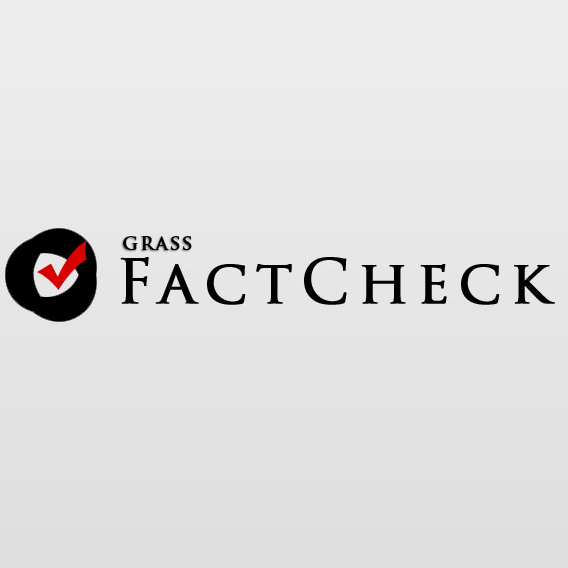A borrowing of GEL 3.4 billion is planned for 2025 of which GEL 1.6 billion is domestic debt and GEL 1.8 billion is external debt according to the draft state budget. The share of external debt in total revenues is 6.6%. External debt is divided into two categories: budget support credits and long-term investment preferential credits. The investment credit plan was implemented by 70% in the first quarter whilst budget support credits stood at 0%. The five-month implementation rate also remains at GEL 0 making this part of the budget the most problematic so far.
External debt is mainly used to finance infrastructure projects with the largest share coming from multilateral creditors. These include international financial institutions such as the World Bank, Asian Development Bank, European Bank for Reconstruction and Development, European Investment Bank, International Monetary Fund and others.
A total of GEL 132 million should be spent on human capital development through a World Bank loan and GEL 30 million through a loan from the French Development Agency according to the plan.
It is projected to spend GEL 300 million on moving toward a greener direction with half to be financed by the French Development Agency and the other half by the German Reconstruction Credit Bank.
The largest portion of the planned external debt — over GEL 1.2 billion — consists of long-term investment preferential credits. Who finances what within these credits? The following projects are planned to be financed in 2025:
Table 1: Top Ten Projects Financed with External Debt
Source: Ministry of Finance of Georgia
The ten largest projects named are expected to cost GEL 673 million. An additional GEL 553 million is planned for 55 smaller projects. The full list includes infrastructure, energy and agricultural programmes. More than GEL 8 million is allocated for the development of dairy farming, GEL 5 million for the Ajara solid waste project, GEL 21 million for the 500 kW Jvari-Tskaltubo power transmission line and GEL 25 million for the Black Sea submarine power transmission line project. The complete list of programmes can be found in Chapter IV of the 2025 State Budget Law.
The largest share of external debt has been owed to international financial institutions so far. Georgia’s total external government debt as of 31 May 2025 stood at USD 8.6 billion — GEL 23.5 billion, 76% of which, or more than USD 6.5 billion, was owed to multilateral creditors. Bilateral creditors (individual states) accounted for 18%, or USD 1.6 billion, and Eurobonds made up 6%, or USD 500 million.
Graph 1: Structure of External Debt as of 31.05.2025
Source: Ministry of Finance of Georgia
The government’s debt does not include the National Bank’s USD 362 million debt which is owed solely to one creditor — the IMF, an international financial institution.
Georgia’s largest debt is to the Asian Development Bank, at almost USD 2.4 billion. The second largest amongst multilateral creditors is to the World Bank or, more precisely, its group of institutions: Georgia owes more than USD 1.7 billion to the International Bank for Reconstruction and Development (IBRD) and USD 452 million to the International Development Association (IDA).
Graph 2: Debt Owed to Multilateral Creditors as of 31.05.2025 (USD Million)
Source: Ministry of Finance of Georgia
Georgia’s largest debt amongst individual states is to France, at USD 824 million, followed by Germany with USD 586 million and Japan with USD 128 million. The share of other countries is 2%.
Graph 2: Debt Owed to Bilateral Creditors as of 31.05.2025 (USD Million)
Source: Ministry of Finance of Georgia
The plan for increasing external liabilities was implemented at 106.9% in 2023, including budget support credits at 102.9% and investment long-term preferential credits at 107.6%. The implementation plan for increasing external liabilities dropped to 93%. Investment credits did not face any issues — on the contrary, they were implemented at 109.4%. However, the implementation rate for budget support credits was only 56.5%, with just GEL 327 million mobilised instead of the planned GEL 580 million.
There are issues with debt utilisation this year as well. The investment credit plan was implemented at 69.5% in the first quarter whilst budget support credits remained at 0% and the situation did not change in April-May. Whilst the six-month investment credit plan was implemented at 49.2% in five months, the budget support credits again constituted 0%. Budget support credits were supposed to amount to GEL 69 million in three months and to GEL 270 million in six months, yet the five-month implementation is still GEL 0. The annual plan stands at GEL 600 million.
Table 2: Implementation Rate of Increasing External Liabilities
Source: State Treasury
A similar situation had never been recorded until 2024 under the Georgian Dream’s governance. Although the government had struggled to absorb investment credits in early years, the issue was resolved by 2015. Budget support credits were almost always overdrawn, except for a minor 0.2% shortfall in 2017, which did not change the overall picture. The year 2020 stands out due to the pandemic: the plan approved in December 2019 called for an increase in external liabilities of GEL 1.9 billion, which was later raised to GEL 6.2 billion, with GEL 5.3 billion actually used.
In practice, 2024 was the first year since 2013 when the budget support credit plan was not met, excluding such exceptions. The situation worsened even further into 2025 with this part of the budget still at GEL 0 after five months. The start of this lag coincides with the deterioration of relations with the West and as relations worsened even further in 2025, the performance indicator fell again. If the trend continues and this part of the credit remains unused by year’s end, the shortfall in revenues will reach 2.2% (GEL 6.6 million out of the GEL 27.6 billion).
The GEL 253 million shortfall in investment credits did not prevent the annual budget from being executed in 2024 and the plan for the first quarter has also been met according to the first-quarter data for this year. The performance figures for six months will be available in July. Even if the overall plan is met (whether through lower expenditures, increased use of financial assets, or over performance of the privatisation plan), such a large gap in the growth of external liabilities clearly signals problems.







